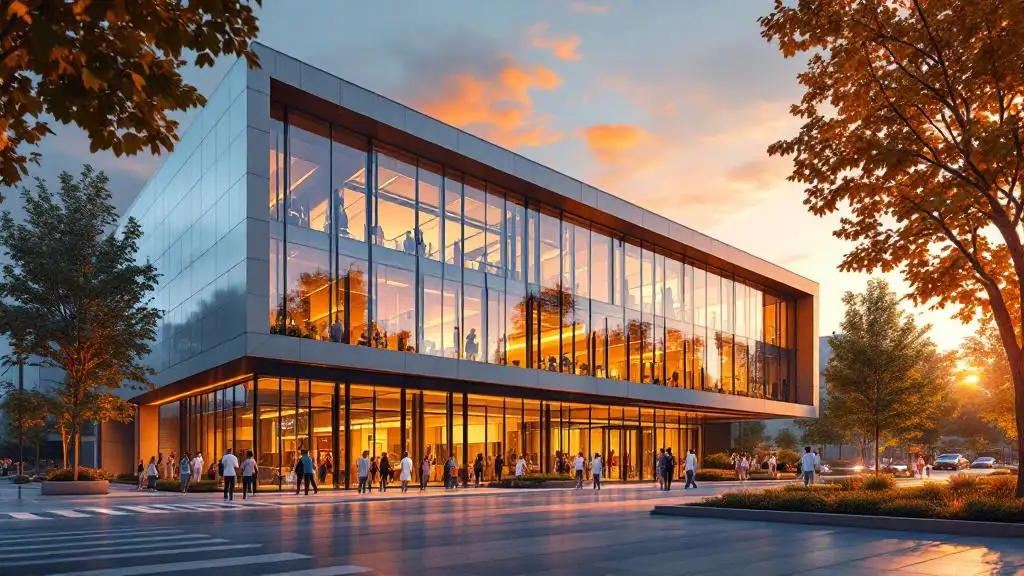Assisted Living Marketing Statistics Revealed
When it comes to marketing assisted living communities, it is crucial to have a deep understanding of the target audience and the importance of strategic marketing.


Assisted Living Marketing Statistics Revealed
Understanding Assisted Living Marketing
When it comes to marketing assisted living communities, it is crucial to have a deep understanding of the target audience and the importance of strategic marketing. By gaining insights into the preferences and needs of potential residents and their families, senior living communities can tailor their marketing efforts to effectively reach and engage their target audience.
Target Audience Insights
The target audience for assisted living communities comprises both older adults who are considering a transition to a senior living environment and their adult children who often play a significant role in the decision-making process. In fact, adult children are involved in their parent's senior living decisions 73% of the time, highlighting the importance of including them in the target audience when marketing senior living communities.
It is also worth noting that there is a variety in specialized services offered in senior living communities. For example, approximately 14.3% of assisted living communities in the U.S. have a designated wing, unit, or floor for dementia care, and 8.7% exclusively cater to adults with dementia [1]. Understanding the specific needs and preferences of the target audience, such as those seeking dementia care services, allows senior living communities to tailor their marketing messages accordingly.
Importance of Strategic Marketing
In an increasingly competitive market, strategic marketing is essential for assisted living communities to stand out and attract potential residents. It involves developing a comprehensive marketing plan that aligns with the goals and values of the community.
One important aspect of strategic marketing is the allocation of budget resources. By carefully allocating marketing funds to various channels and strategies, senior living communities can maximize their reach and impact. This may include investing in digital marketing efforts, traditional advertising, events, and community partnerships.
Digital marketing, in particular, has become increasingly important in reaching the target audience. With 75% of people starting their senior living research on search engines, having a strong online presence is crucial [1]. This emphasizes the significance of search engine optimization (SEO) techniques and creating helpful, informative content to boost online visibility. Additionally, social media platforms provide an effective means to reach both adult children and potential residents, as internet and social media use is increasing among seniors.
By implementing a strategic marketing approach that considers the target audience and leverages various channels, assisted living communities can effectively promote their services and attract individuals who are seeking a supportive and fulfilling senior living experience.
Key Statistics in Assisted Living Marketing
When it comes to marketing assisted living communities, understanding key statistics can provide valuable insights into effective strategies. Here are three important statistics to consider in assisted living marketing: dementia care services, involvement of adult children, and online research trends.
Dementia Care Services
In the United States, about 14.3% of assisted living communities have a designated wing, unit, or floor specifically catering to individuals with dementia. Additionally, 8.7% of communities exclusively focus on providing care for adults with dementia. These statistics highlight the importance of offering specialized services for individuals with dementia within senior living communities. By addressing the unique needs of this population, assisted living communities can effectively target and provide quality care to those requiring dementia-related assistance.
Involvement of Adult Children
When it comes to decision-making for senior living, adult children play a significant role. Approximately 73% of the time, adult children are involved in the decisions related to their parents' senior living arrangements. This statistic underscores the importance of including adult children as part of the target audience in marketing efforts. Recognizing their involvement and addressing their concerns can help senior living communities effectively reach and engage this key demographic.
Online Research Trends
In the digital age, online research has become a crucial part of the decision-making process for senior living. Around 75% of people begin their research on search engines when looking for senior living options [1]. This statistic highlights the significance of having a strong online presence and implementing search engine optimization (SEO) strategies. By providing informative and helpful content, senior living communities can enhance their online visibility and ensure they are easily discoverable by potential residents and their families.
Moreover, social media platforms have emerged as effective tools for reaching both adult children and residents in senior living communities. With the increasing use of the internet and social media among seniors, targeted advertising on social media platforms presents an excellent opportunity to engage with the desired audience [1]. By utilizing these platforms strategically, senior living communities can connect with their target demographic and showcase the benefits and services they offer.
Understanding these key statistics empowers assisted living communities to develop effective marketing strategies. By tailoring their approaches to include specialized dementia care services, recognizing the involvement of adult children, and adapting to online research trends, senior living communities can optimize their marketing efforts and attract the right audience.
Effective Marketing Strategies
When it comes to marketing assisted living facilities, implementing effective strategies is crucial for reaching and engaging the target audience. In this section, we will explore three key aspects of effective marketing strategies: budget allocation recommendations, digital marketing trends, and leveraging social media platforms.
Budget Allocation Recommendations
Allocating an appropriate budget for marketing efforts in long-term care facilities requires a strategic approach. While there is some variation in opinions, an advertising agency suggests that between 5% and 20% of the budget should be spent on marketing for long-term care facilities. However, fellow owners and administrators may provide varied responses based on specific circumstances and goals [2].
To determine the ideal budget allocation, it is essential to have a strategic marketing plan in place. This plan allows for ongoing evaluation of the budget's effectiveness and adjustments to meet marketing goals throughout the year. Without a strategic marketing plan, allocating a budget for marketing becomes a guess-and-hope-for-the-best scenario for long-term care facilities.
Creating Results, a marketing agency, suggests that a business' marketing budget should be based on specific goals and not solely on a percentage of revenue. They recommend using an equation that considers the number of leads needed and the cost per lead to determine an appropriate budget. This equation provides a foundation for developing a marketing budget and allows for flexibility based on specific circumstances.
Digital Marketing Trends
To effectively market assisted living services, it is crucial to meet prospects where they are, which nowadays is predominantly online. This suggests that investing more in digital channels can be more beneficial. Digital marketing strategies such as paid search marketing, targeted display ads, and Facebook ads can help reach and engage the target audience. However, traditional channels like print or broadcast can still be considered if prospects are consuming them.
Analyzing current marketing tactics is essential for optimizing marketing strategies and budget allocation. By identifying tactics that are helping achieve goals versus those that are not, businesses can adapt their strategies, invest in more beneficial channels, and pivot their plans when needed. Marketing budgets are dynamic, allowing for adjustments to be made based on performance [3].
To assist in aligning marketing budgets with goals, Creating Results offers a Senior Living Marketing Budget Calculator. This tool provides an estimate range for the annual direct marketing budget needed to achieve specific goals, based on industry benchmarks and data from over 25 years of senior living experience. Utilizing this tool can help assisted living facilities make informed decisions regarding their marketing budget allocation [3].
Leveraging Social Media Platforms
Social media platforms have become powerful tools for reaching and engaging with the target audience. Assisted living facilities can leverage platforms such as Facebook, Instagram, and LinkedIn to showcase their services, share valuable content, and connect with potential residents and their families.
By utilizing social media platforms, assisted living facilities can create a sense of community, share success stories, and provide valuable information about the services they offer. Engaging with followers, responding to inquiries, and addressing concerns can help build trust and credibility.
It's important to tailor social media content to resonate with the target audience. Assisted living facilities can share testimonials, highlight staff members, and provide insights into daily activities to give potential residents and their families a glimpse into the community and the care provided.
Regularly monitoring social media analytics and insights can provide valuable data on audience engagement and help refine marketing strategies. Assisted living facilities can adjust their content strategy, targeting, and budget allocation based on performance metrics to maximize the impact of their social media efforts.
By effectively allocating budgets, embracing digital marketing trends, and leveraging social media platforms, assisted living facilities can enhance their marketing strategies and connect with their target audience in a meaningful way.
Enhancing Online Presence
In the digital age, having a strong online presence is essential for effective marketing in the assisted living industry. This section will explore three key strategies to enhance the online presence of assisted living facilities: search engine optimization (SEO), customer reviews and testimonials, and email marketing strategies.
Search Engine Optimization (SEO)
Search engine optimization (SEO) plays a crucial role in improving the online visibility and search engine rankings of assisted living facilities. According to McClatchy, 75% of people start their senior living research on search engines, highlighting the importance of optimizing websites for relevant keywords and creating helpful content.
To improve SEO, assisted living facilities should incorporate relevant keywords in page titles, meta descriptions, headers, and content on their websites. By understanding the keywords potential residents might use during searches, facilities can tailor their content to meet those needs. Regularly updating the website with fresh and informative blog posts can also boost search engine rankings and attract more visitors.
Customer Reviews and Testimonials
Online reviews and testimonials have a significant impact on the decision-making process for individuals seeking assisted living facilities. Positive reviews and testimonials from satisfied residents and their families enhance the reputation and credibility of these facilities. Assisted living facilities should encourage residents to share their experiences on platforms such as Google My Business, Yelp, and senior care directories.
Embedding reviews in Google ads and campaigns, as well as utilizing video testimonials on digital platforms, can further strengthen the reputation of senior care facilities. Responding to reviews, both positive and negative, demonstrates a commitment to excellent customer service and shows potential residents that their opinions are valued.
Email Marketing Strategies
Email marketing is a powerful tool for nurturing leads and staying connected with potential residents. Assisted living facilities can collect email addresses through their websites and use them to send informative newsletters, updates on facility offerings, and personalized messages. Segmenting the email list based on interests and demographics allows for targeted and relevant communication, increasing the effectiveness of email campaigns [4].
By utilizing email marketing strategies, assisted living facilities can establish and maintain relationships with potential residents, keeping them informed about the facility's services and offerings. This personalized approach helps to build trust and engagement, ultimately leading to increased conversions and occupancy rates.
To ensure the effectiveness of email marketing campaigns, assisted living facilities should regularly analyze and optimize their efforts. Continuous monitoring and analysis of digital marketing strategies are crucial for refining tactics, improving results, and achieving a positive return on investment [6].
By implementing these strategies, assisted living facilities can enhance their online presence, reach a wider audience, and establish meaningful connections with potential residents. Embracing SEO practices, leveraging customer reviews and testimonials, and utilizing email marketing strategies are key steps in successful assisted living marketing campaigns.
Sales and Customer Relationship Management
Efficient sales and customer relationship management are vital components of successful assisted living marketing strategies. The following sections discuss key aspects related to sales personnel training, utilizing resident referral programs, and implementing customer relationship management (CRM) systems.
Sales Personnel Training
To ensure the effective representation of an assisted living facility, it is crucial for all sales personnel to undergo formal training on sales etiquette, strategy, and technology tools. This training equips staff members with the necessary skills to handle interactions with potential residents efficiently. Regardless of their role, every staff member should be well-equipped to provide accurate information, address concerns, and foster a positive rapport with prospective residents. By investing in comprehensive sales training, assisted living facilities can enhance the overall sales experience and increase the likelihood of converting leads into residents.
Utilizing Resident Referral Programs
Resident referral programs can be a powerful marketing tool for assisted living facilities. These programs incentivize current residents and their families to refer friends, family members, or acquaintances who may be interested in the facility's services. By offering rewards or incentives for successful referrals, facilities can tap into the trust and satisfaction of their existing residents, leveraging their positive experiences to attract new residents. Implementing and promoting resident referral programs can significantly contribute to a facility's marketing efforts and generate a steady stream of qualified leads.
Implementing CRM Systems
Customer relationship management (CRM) systems play a crucial role in tracking lead interactions, understanding the impact of marketing and sales initiatives, and improving overall sales effectiveness. CRM systems enable assisted living facilities to effectively manage and nurture their leads, ensuring personalized follow-ups and timely communication. These systems provide valuable insights into the effectiveness of marketing and sales strategies, allowing facilities to make data-driven decisions to enhance their occupancy rates. By implementing a CRM system, assisted living facilities can streamline their sales processes, improve lead management, and enhance the overall customer experience.
When implementing a CRM system, it is important to choose a solution that aligns with the specific needs of the assisted living facility. This includes considering features such as lead tracking, contact management, task automation, and reporting capabilities. By utilizing a CRM system tailored to their requirements, facilities can effectively manage their sales pipeline, nurture leads, and build strong relationships with potential residents and their families.
By prioritizing sales personnel training, resident referral programs, and CRM system implementation, assisted living facilities can enhance their marketing efforts and improve their occupancy rates. These strategies contribute to building a strong sales team, harnessing the power of satisfied residents, and utilizing technology to streamline sales processes and nurture leads effectively.
Adapting to the Digital Landscape
In today's digital era, assisted living facilities need to adapt their marketing strategies to remain visible and effectively connect with their target audience. Digital marketing has become an indispensable tool for enhancing online presence and reaching potential residents and their families. To navigate the digital landscape successfully, assisted living facilities can employ various strategies, including paid advertising, targeted digital campaigns, and monitoring and analysis of marketing efforts.
Paid Advertising Strategies
Paid advertising on platforms like Google and Facebook allows assisted living facilities to target specific audiences and maximize visibility. By leveraging pay-per-click (PPC) advertising, facilities can create customized campaigns that appear when individuals search for relevant keywords or when their demographics align with the targeting criteria. This approach ensures that marketing efforts are directed towards those actively seeking information about assisted living options.
Targeted Digital Campaigns
Crafting tailored ad campaigns that resonate with different demographics, such as seniors, adult children, and caregivers, is crucial in the marketing strategy for assisted living facilities. Over 90% of consumers rely on the internet to find the best options for their needs when searching for assisted living communities. By understanding the unique concerns and preferences of each demographic, facilities can create targeted digital campaigns that address their specific needs and showcase the benefits of their services. This approach helps to increase engagement and conversion rates.
Monitoring and Analysis of Marketing Efforts
Continuous monitoring and analysis of digital marketing efforts are crucial for optimizing strategies and ensuring a return on investment for assisted living facilities. By utilizing tools like Google Analytics and social media analytics, facilities can track key metrics such as website traffic, conversion rates, and engagement levels. These insights provide valuable information about the effectiveness of marketing campaigns, allowing facilities to make data-driven decisions and refine their strategies accordingly. Regular analysis also helps to identify trends and areas for improvement, ensuring that marketing efforts remain aligned with the goals of the facility.
Adapting to the digital landscape is essential for assisted living facilities to remain competitive and effectively reach their target audience. By implementing paid advertising strategies, creating targeted digital campaigns, and continuously monitoring and analyzing marketing efforts, facilities can enhance their online presence and connect with potential residents and their families in a meaningful way.
References
[1]: https://www.winwithmcclatchy.com/blog/audience-for-senior-living-community-marketing
[2]: https://www.seniorlivingforesight.net/long-term-care-facility-marketing-budget-how-much-money-should-be-allocated/
[3]: https://creatingresults.com/blog/2020/10/22/marketing-budget-tips/
[4]: https://theconversionformula.com/blog/marketing-strategies-for-assisted-living/
[5]: https://www.iadvanceseniorcare.com/top-marketing-trends-your-senior-care-facility-should-embrace-this-year/
[6]: https://www.linkedin.com/pulse/complete-guide-digital-marketing-assisted-living-facilities-aqib-h-fe7tc?trk=public_post
[7]: https://accurateappend.com/assisted-living-marketing-ideas/







